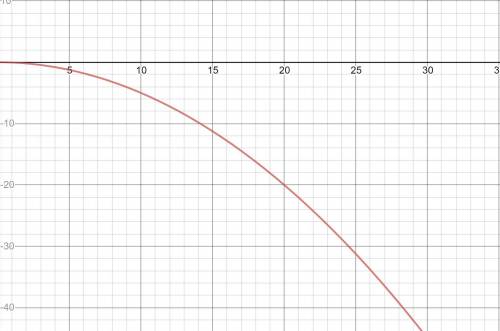
Engineering, 12.02.2020 03:27 angie07253
A particle of given mass m 1kg, and charge q1 Couloumb, is placed in a magnetic field B 1k Tesla and thus is subjected to the effects of the Lorentz force. The force causes it to have an acceleration: a =-(v × B), where v is the particle's velocity. Assume that the motion of the particle remains in the x-y plane and neglect the gravity. If at t-0 sec, the particle was at x y 0 m with an initial speed voー10 ^ m/s, find the equation of the path traced by the particle as it moves. Plot this path. Hint: What is the direction and magnitude of the v crossed with B? If along with the Lorentz force, there was also a drag force acting on the particle that causes an additional acceleration a =-cu, where the coefficient c 0.1 Ns/m, what do you think the path will look like, approximately? Give your reasoning. Once again assume at t -0 sec, the particle was at x-y 0 m with an initial speed vo - 10î m/s. We don't want you to derive the equation of the path in this case, we just want you to reason what its shape will look like

Answers: 1


Another question on Engineering

Engineering, 04.07.2019 18:10
Which from the following instrument is commonly used to detect the high pitch butzing sound in bearings? [clo4] a)-digital ultrasonic meter b)-infrared camera c)-spectroscopic d)-vibrometer
Answers: 2

Engineering, 04.07.2019 19:10
When subject to a steady load (within elastic range) over a long period of time, what is the major difference in material behavoir between steel and plastic?
Answers: 2

Engineering, 04.07.2019 19:20
Afan that can provide air speeds up to 60 m/s is to be used in a low-speed wind tunnel with atmospheric air at 35 c. if one wishes to use the wind tunnel to study flat-plate boundary layer behavior up to reynolds numbes of re 10, what is the minimum plate length that should be used? at what distance from the leading edge would transition occur if the critical reynolds nurnber were rer,e = 5 × 105?
Answers: 2

Engineering, 04.07.2019 19:20
Ashielded metal arc-welding operation is accomplished in a work cell by a fitter and a welder. the fitter takes 5.5 min to load components into the welding fixture at the beginning of the work cycle, and 1.5 min to unload the completed weldment at the end of the cycle. the total ength of the weld seams 1200 mm, and the travel speed used by the welder averages 300 mm/min. every 600 mm of seam length, the welding stick must be changed, which takes 0.8 min. while the fitter is working, the welder is idle (resting): and while the welder is working the fitter is idle. (a) determine the average arc-on time as a fraction of the work cycle time. (b) how much improvement in arc-on time would result if the welder used flux-cored arc welding (manually operated), given that the spool of weld wire must be changed every 10 weldments, and it takes the welder 5.0 min to accomplish the change? (c) what are the production rates for these two cases (weldments completed per hour)? attach your work and solutions.
Answers: 1
You know the right answer?
A particle of given mass m 1kg, and charge q1 Couloumb, is placed in a magnetic field B 1k Tesla and...
Questions


Biology, 11.07.2019 07:00

Biology, 11.07.2019 07:00



Biology, 11.07.2019 07:00




Social Studies, 11.07.2019 07:00








Social Studies, 11.07.2019 07:00






